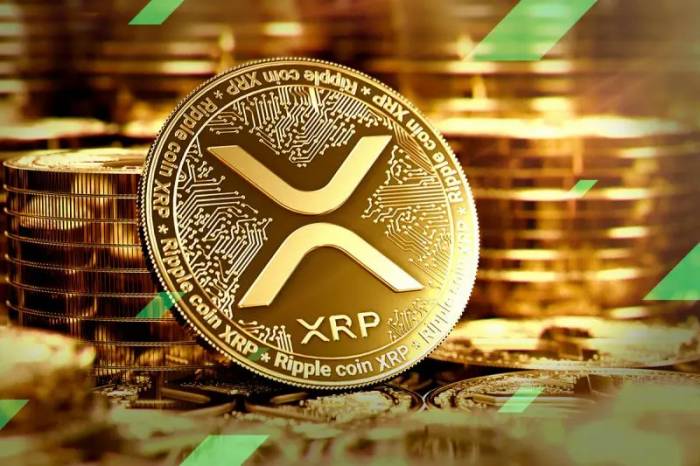Cryptocurrencies like XRP have garnered significant attention and utility across various industries, especially with increasing institutional adoption. Ripple’s payment solutions have introduced efficiency in cross-border transactions, promising fast, low-cost, and secure transfers. Yet despite the rise in adoption of XRP’s underlying technology and partnerships, the price of XRP has remained relatively stable, not experiencing the significant gains one might expect from increased usage. Here’s a deep dive into the factors contributing to this disconnect.
1. Adoption ≠ Speculation
Cryptocurrency adoption and price speculation often operate independently, especially in the case of XRP. For example, even though XRP powers Ripple’s On-Demand Liquidity (ODL) services, which enables rapid and efficient cross-border payments, this utility doesn’t automatically translate to an increased demand for XRP in a way that would drive up its market price. The crypto market often relies on speculative demand, which fluctuates based on market sentiment rather than actual utility.
For XRP to see a direct price increase from adoption, more financial institutions and businesses would need to hold and transact in XRP. However, most users of RippleNet do not need to hold large amounts of XRP, as Ripple itself often acts as the intermediary, managing liquidity through ODL. This setup allows banks and financial institutions to avoid the volatility of holding XRP directly, thereby limiting the speculative impact on price.
2. High Token Supply and Controlled Distribution
XRP has a large supply, with a maximum of 100 billion tokens created at launch. Ripple Labs still holds a substantial portion of this supply, regularly releasing tokens from escrow into circulation. While this ensures liquidity, it also dampens the potential for scarcity—a key factor in driving up prices for other cryptocurrencies like Bitcoin, where supply is capped at 21 million and distributed at a slower pace.
By controlling the release rate, Ripple aims to prevent market shocks but inadvertently caps price growth. When large amounts of XRP are released, it can dilute the market, lowering the price or keeping it stagnant, even in times of high demand.
3. Regulatory Uncertainty
XRP’s association with Ripple has attracted regulatory scrutiny, especially in the United States. The ongoing SEC lawsuit, which questions whether XRP should be classified as a security, has hindered investor confidence. Regulatory uncertainty around XRP has restricted listings on major U.S. exchanges and limited access for U.S. investors.
This legal battle impacts XRP’s price because, unlike decentralized cryptocurrencies such as Bitcoin and Ethereum, XRP’s close ties to Ripple subject it to the same regulatory concerns as a centralized entity. Until this legal cloud is lifted, many investors remain hesitant, and potential market growth is stunted.
4. Utility vs. Investor Sentiment
XRP’s price is not just a reflection of its utility but also a product of investor sentiment, which is currently divided. On one hand, XRP has a loyal following of investors who believe in its potential; on the other, there’s skepticism due to the centralized control Ripple holds over the token’s supply and direction.
The market tends to favor decentralized cryptocurrencies, where control is more distributed. Since Ripple Labs has a strong influence over XRP’s ecosystem, some investors remain wary of XRP’s long-term potential as an investment. This division in sentiment means that while adoption of Ripple’s technology grows, it doesn’t necessarily correlate with an influx of investors who believe XRP will rise in value.
5. Institutional vs. Retail Demand
Institutional adoption of XRP for payment processing and cross-border solutions isn’t the same as retail demand from everyday investors. Ripple’s clients—banks, financial institutions, and payment providers—are mainly focused on utilizing XRP’s payment solution capabilities, not investing in the token itself. This use case reduces the speculative buying pressure that typically drives crypto prices up.
In contrast, the price of other major cryptocurrencies like Bitcoin and Ethereum benefits greatly from retail demand. Because retail investors are more likely to buy and hold tokens for potential price appreciation, the demand and price for these assets tend to increase. With XRP, the institutional use case does not lead to substantial retail holding, which affects price appreciation.
6. Focus on Remittance and Cross-Border Payments
Ripple’s focus on revolutionizing cross-border payments might actually be a double-edged sword for XRP. While the remittance industry is large and XRP’s low fees and fast transaction times make it a promising solution, the nature of cross-border payments does not necessarily require sustained holding of XRP tokens. XRP acts more as a bridge currency in these transactions, with institutions typically converting it back to fiat immediately, minimizing demand from holding.
To support XRP’s price, there would need to be demand for holding it outside of immediate transactional use, either through staking, savings, or investment opportunities. Without a strong retail use case or a feature that incentivizes users to hold XRP long-term, the increase in adoption of Ripple’s technology alone will have limited impact on XRP’s price.
In Conclusion
XRP’s price stagnation amidst its growing adoption reveals the complexities of cryptocurrency valuation. While XRP has shown remarkable utility and adoption through Ripple’s technology, its price hasn’t reflected this due to factors like high token supply, Ripple’s control over distribution, regulatory concerns, and a user base focused more on utility than speculation.
Until these elements shift—perhaps with regulatory clarity, reduced control by Ripple, or an increase in retail adoption—XRP may remain a paradox in the cryptocurrency world: widely used, but with a price that doesn’t match its adoption levels.

